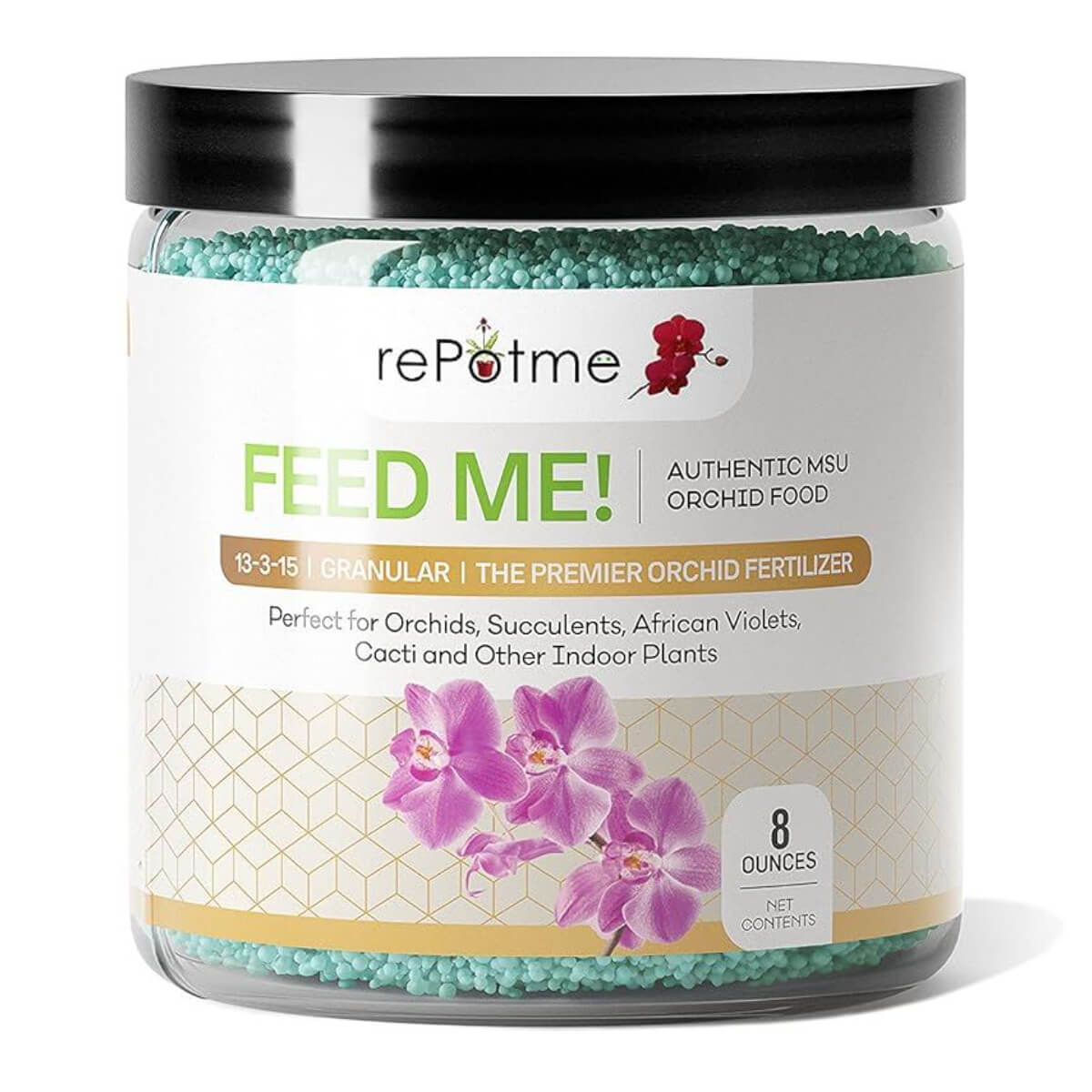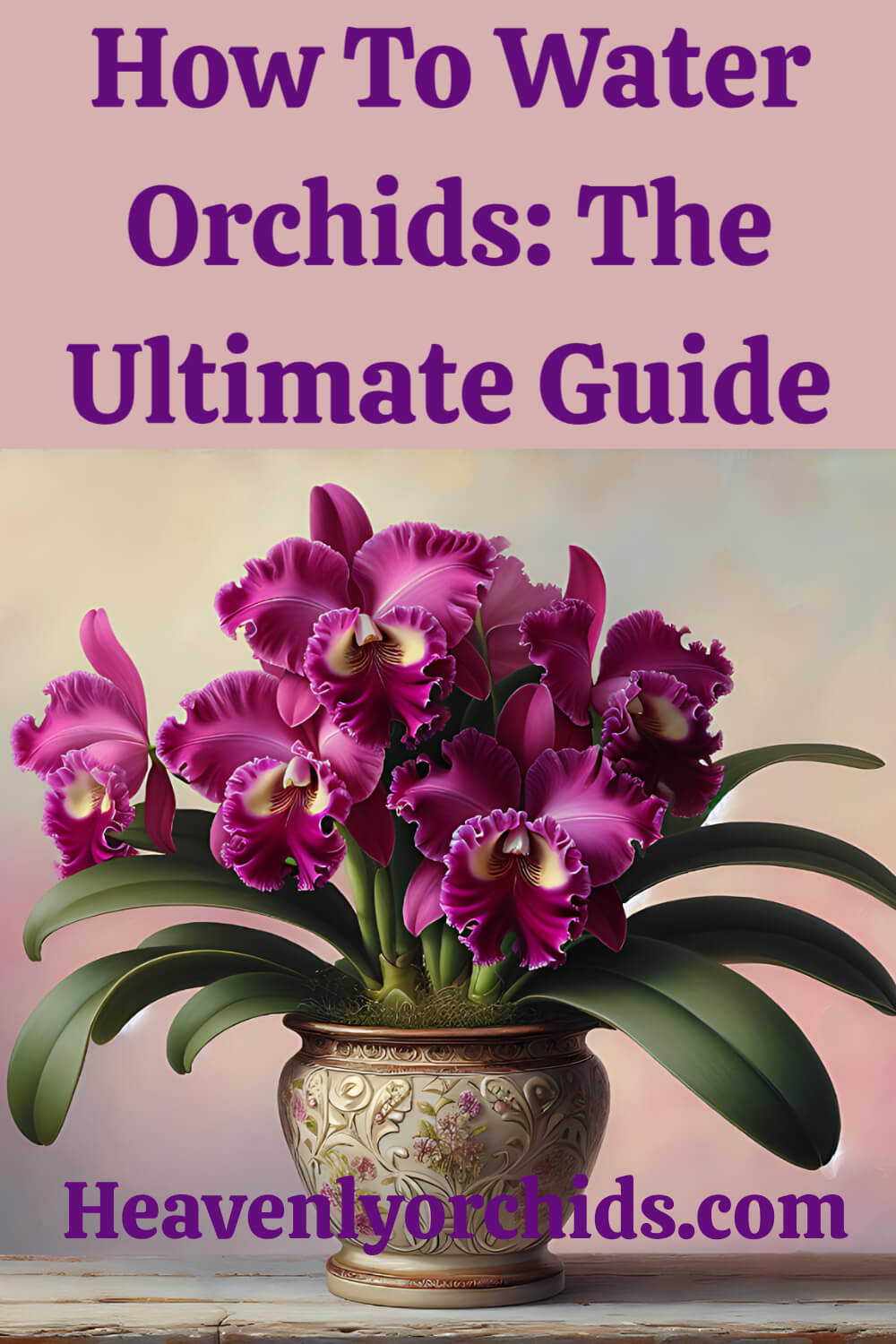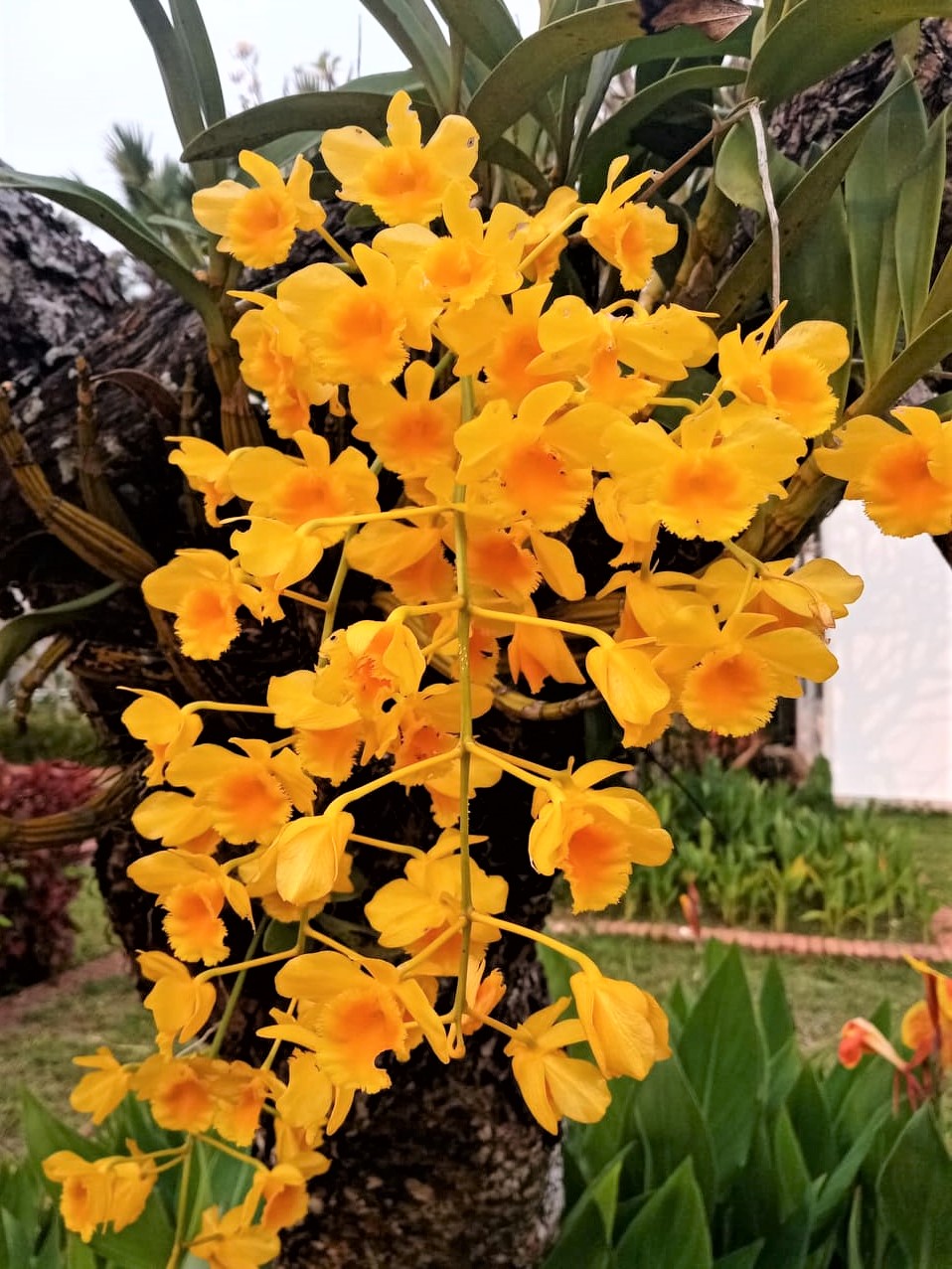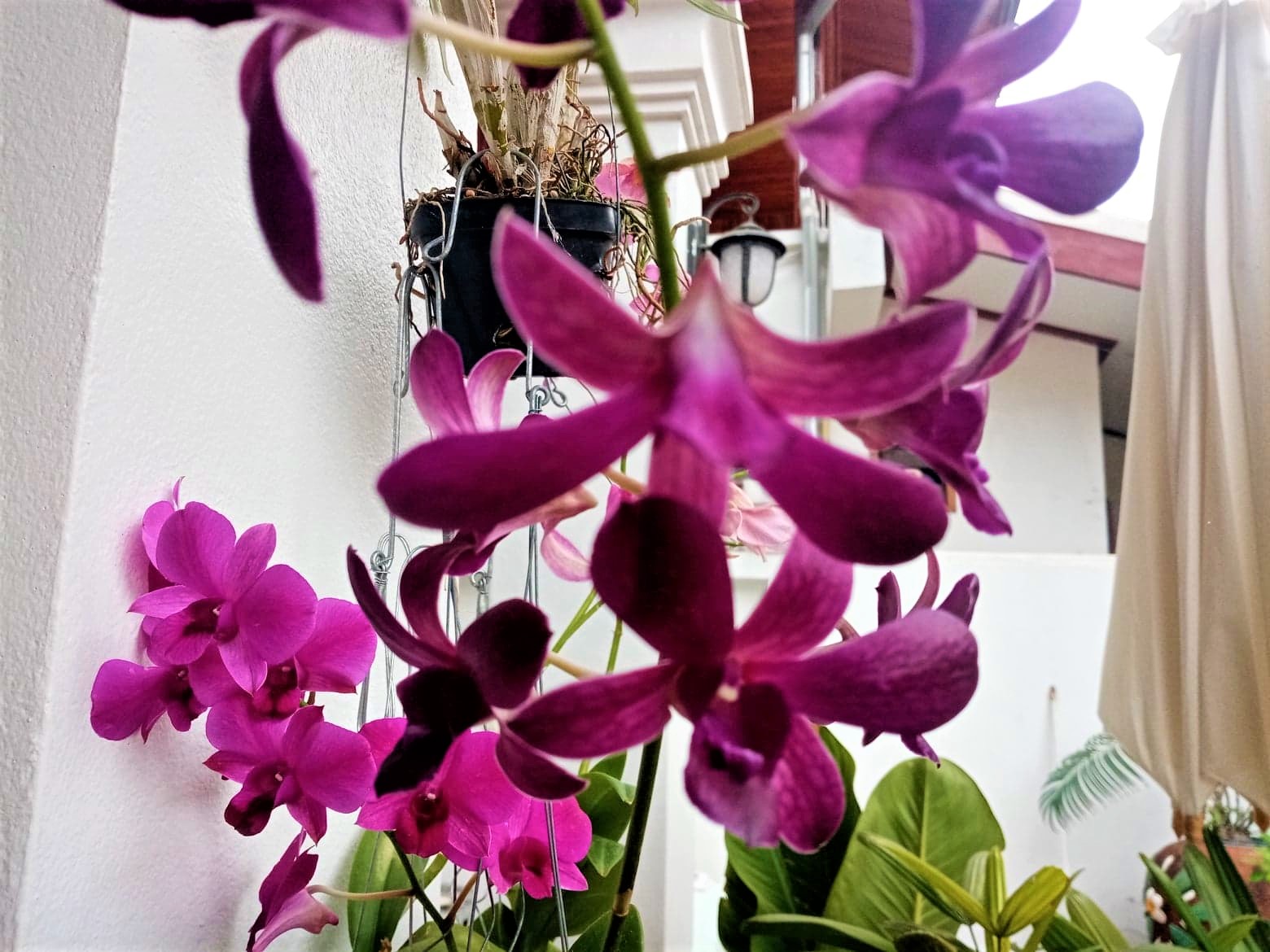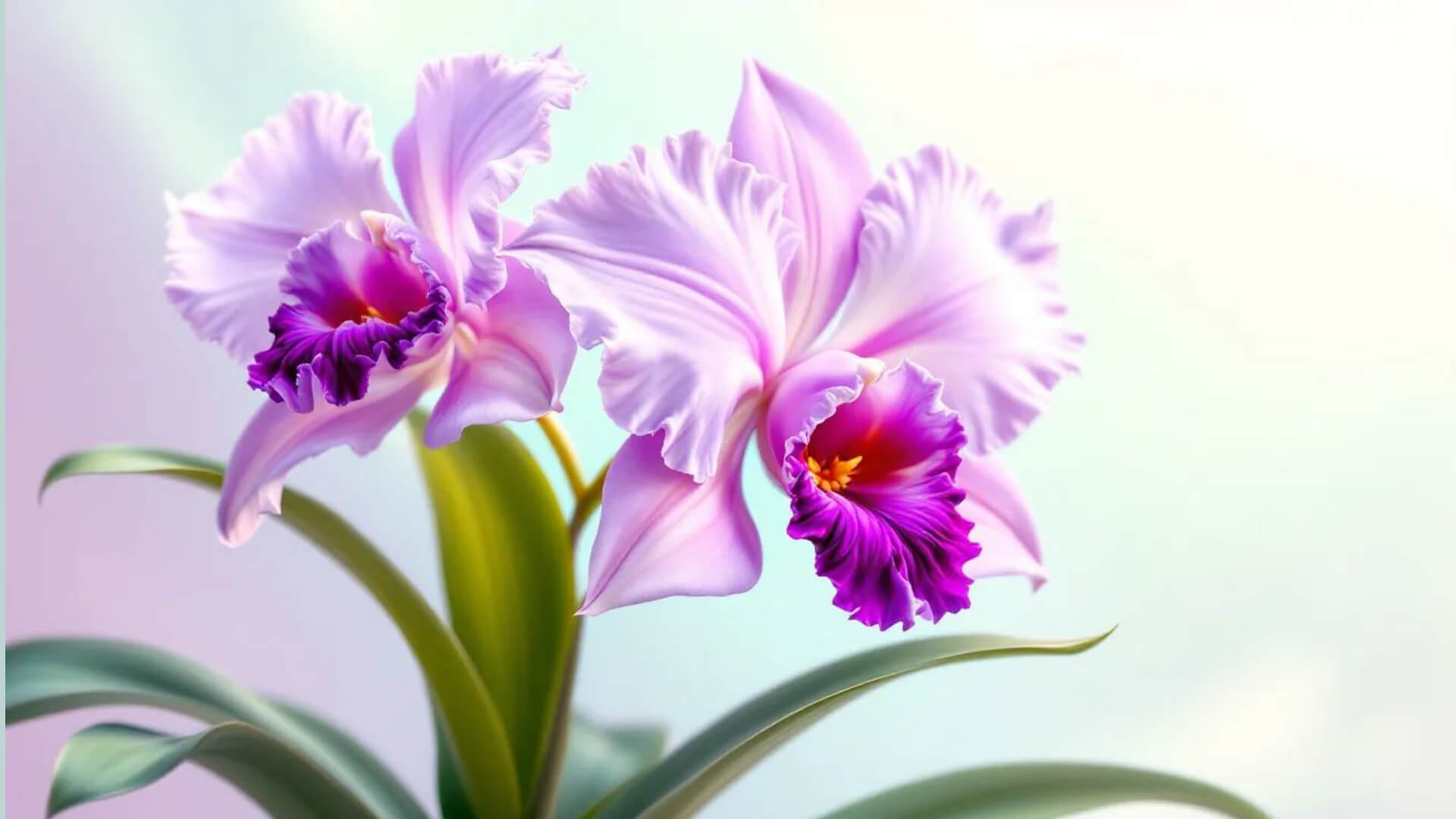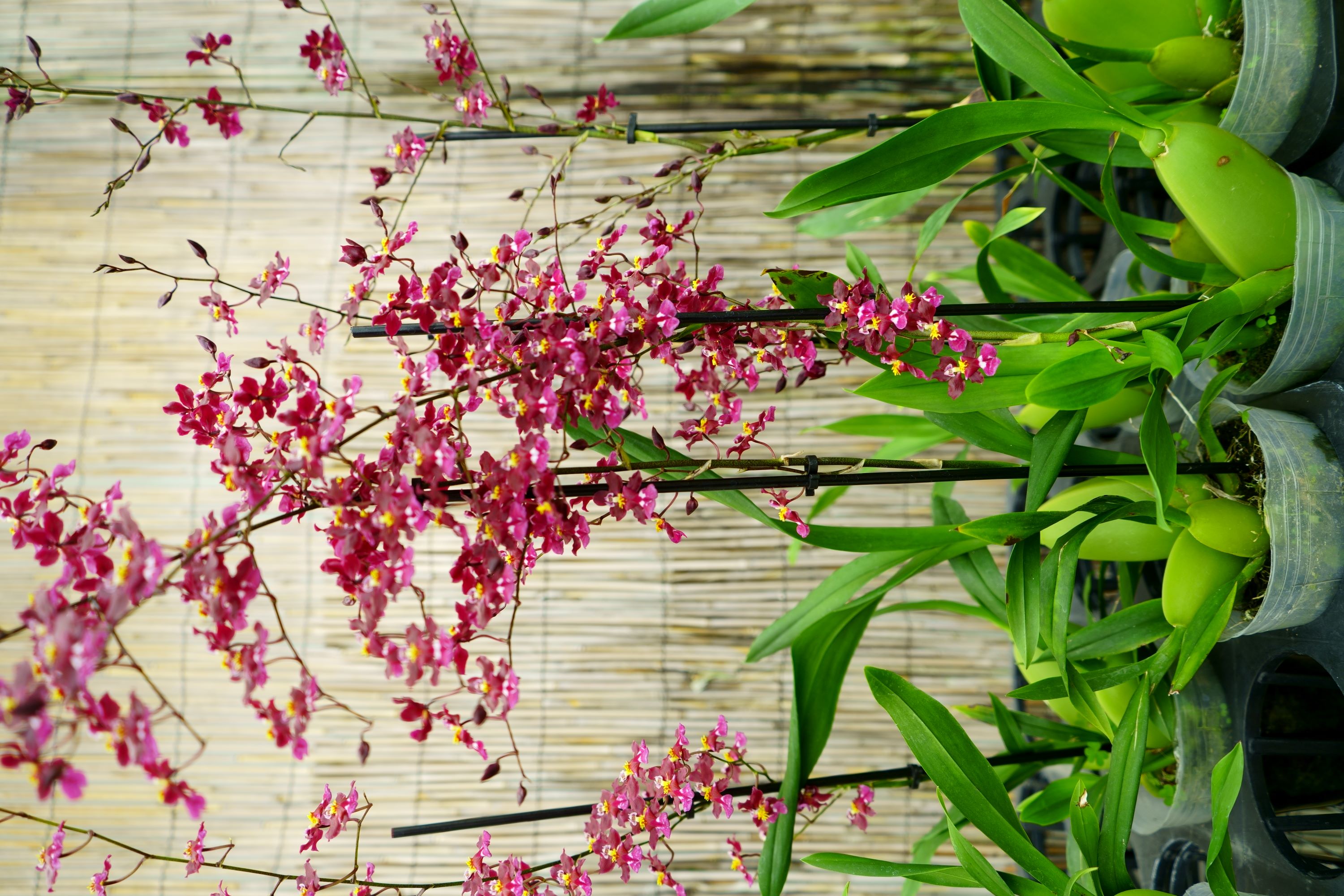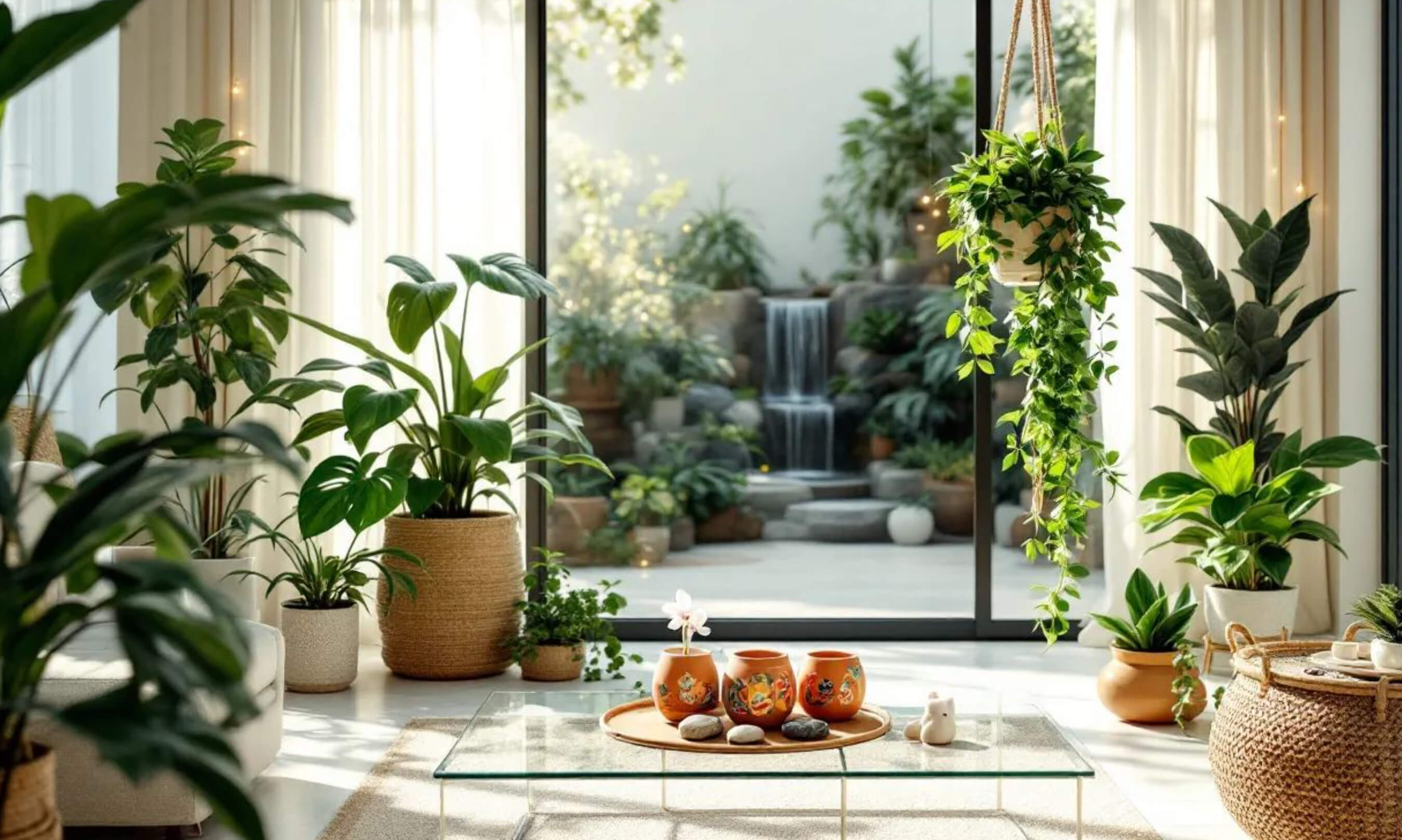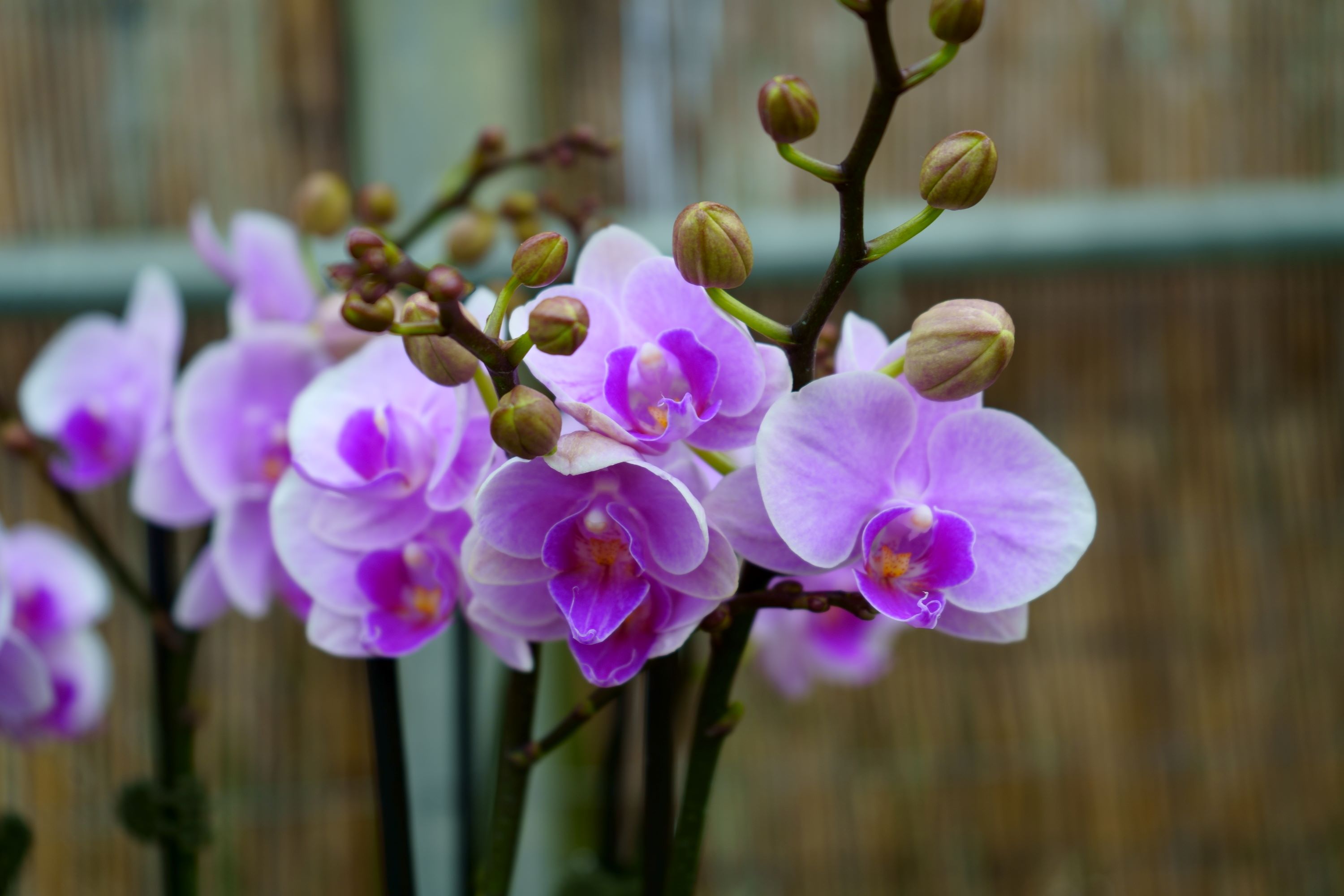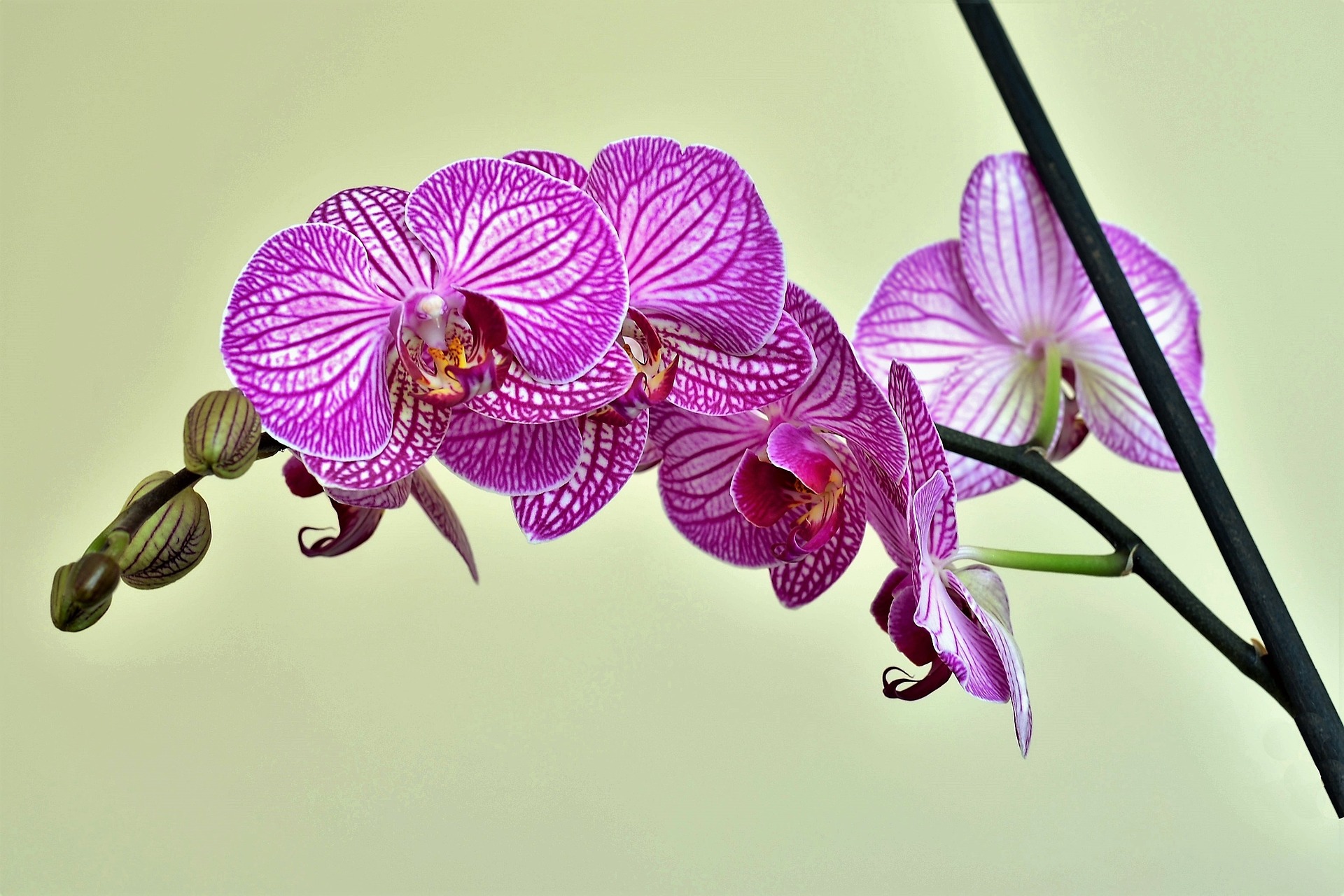- Home
- Orchid Watering Basics
- How To Water
How to Water Orchids: The Ultimate Guide Every Grower Needs
Orchids are the crown jewels of the plant world—exotic, elegant, and utterly captivating. But here’s the catch: most guides on how to water orchids focus solely on Phalaenopsis, leaving growers of other orchid species in the dark. Overwatering, underwatering, root rot—these common struggles often stem from a one-size-fits-all approach that simply doesn’t work for all orchids.
That’s where this guide comes in. This is the ultimate guide to watering orchids you’ve been searching for. Whether you’re nurturing a delicate Miltoniopsis, a bold Cattleya, or a beginner-friendly Phalaenopsis, we’ll break down the secrets to perfect hydration for every species. No more guesswork, no more frustration—just thriving, blooming orchids.
Ready to stop guessing and start growing? Let’s dive in and transform your orchid game!
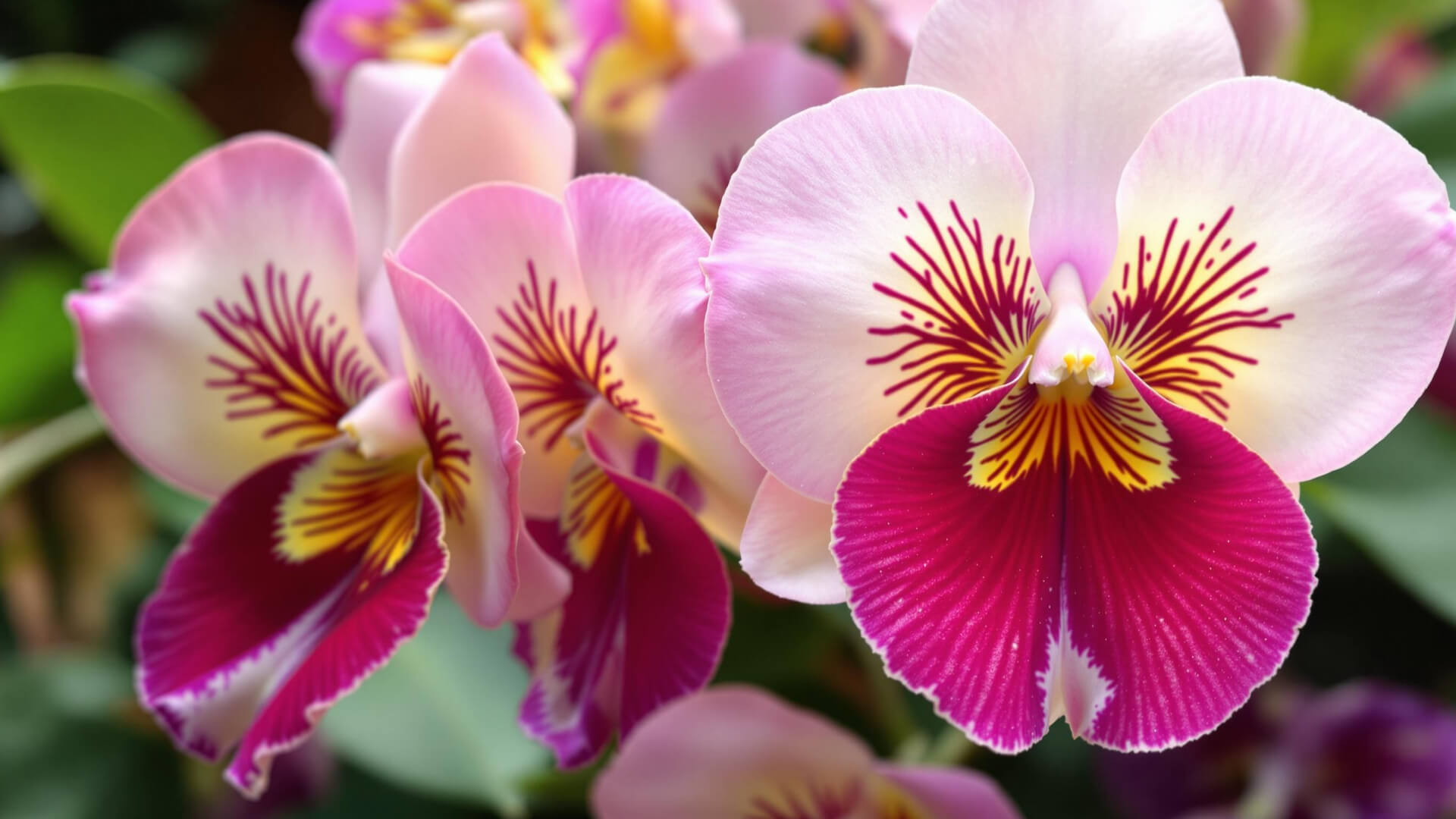
Heavenly Orchids participates in affiliate marketing programs, which means we may earn commissions on qualifying purchases made through our links. We only recommend products we genuinely believe in.
Grow Thriving Orchids! Sign Up for Exclusive Care Tips & Tricks!
Understanding Orchids in Their Natural Environment
Most orchids cultivated today originate from tropical and subtropical regions, where they grow in a variety of environments—from tree canopies (epiphytes) to forest floors (terrestrials) and even rocky outcrops (lithophytes). In their natural habitat, orchids experience distinct wet and dry seasons. During the rainy season, they absorb water from rainfall and humidity, while in the dry season, they rely on moisture from the air, dew, or stored water in their pseudobulbs or leaves.
To replicate these conditions at home, it’s essential to mimic this balance of hydration and dryness. Many orchids, especially epiphytic species like Phalaenopsis and Vandas, grow by attaching themselves to trees or other plants rather than in soil. Their roots are designed to absorb water quickly and dry out efficiently. However, terrestrial orchids, like Paphiopedilums, and some lithophytic species prefer slightly more consistent moisture. Overwatering is one of the most common mistakes orchid owners make, as it can lead to root rot and other diseases, but it’s equally important to avoid underwatering moisture-loving species.
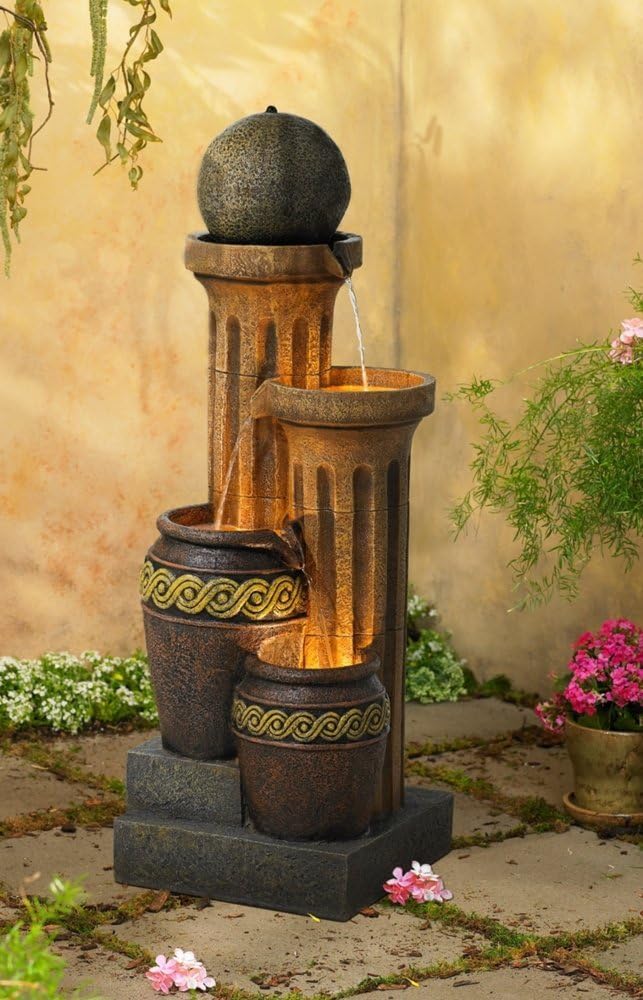
- 50" rustic fountain with LED lights and cascading water.
- Lightweight resin and stone construction, easy to move.
- Includes water pump, 3 LED bulbs, and 6-foot cord.
- Perfect for gardens, patios, balconies, or indoor spaces.
- Creates soothing ambiance with 4-tiered water flow design.
Orchids naturally grow sideways, with their leaves pointing downward. This clever adaptation prevents rainwater from pooling in the crown area (where the leaves meet the stem). In your home, you’ll want to mimic this by ensuring water never accumulates in the crown. If it does, use a paper towel to gently blot away any excess moisture, especially in cooler climates where evaporation is slower.
Pro Tip: If you’re looking to create a tropical environment for your orchids, consider investing in a humidifier or a small indoor waterfall to maintain humidity levels. These products not only benefit your plants but also add a relaxing ambiance to your space.

How to Water Orchids: Factors to Consider
When it comes to watering orchids, there’s no one-size-fits-all approach. Several factors influence how often and how much you should water your orchids:
- Species of Orchid: Different orchids have different water needs. For example, Phalaenopsis orchids prefer to dry out slightly between waterings, while Cattleyas need a longer drying period.
- Growing Medium: The type of medium you use—whether it’s bark, moss, or LECA—affects how quickly water drains and evaporates.
- Container Size: Smaller pots dry out faster than larger ones.
- Climate and Environment: Humidity, temperature, and airflow in your home or garden play a significant role in determining watering frequency.
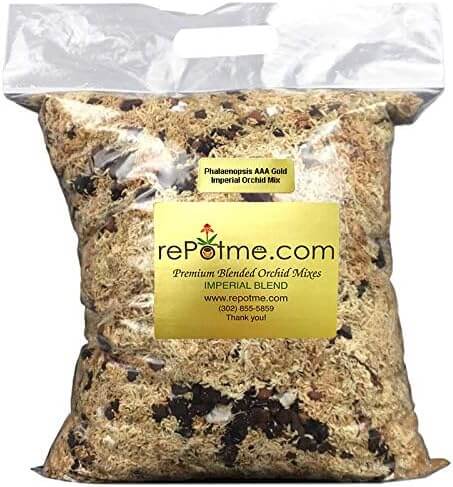
- rePotme Orchid Potting Mix
- Phalaenopsis AAA Gold Imperial Orchid Mix (Mini Bag) -
- Premier Orchid Potting Mix with Orchid Moss and Orchid Bark -
- Hand Blended in The USA
Determining When to Water
To determine how to water orchids correctly, observe its roots and growing medium. For Phalaenopsis and Vandas, hydrated roots typically appear green, while dry roots turn silvery-gray. Clear aerated pots are highly recommended for these species, as they allow you to monitor root health easily. You can then place your orchid inside a decorative pot for a polished look.
However, not all orchids display this color change. For species like Cattleyas, Oncidiums, and Dendrobiums, the roots may not turn green when hydrated. Instead, rely on the weight of the pot and the dryness of the growing medium. Press your finger into the medium—if it feels dry about an inch below the surface, it’s time to water. Take the guesswork out of this with a moisture meter.
Additionally, check for condensation inside the pot. If you see moisture buildup, hold off on watering. Overwatering is a common mistake that can lead to root rot, so when in doubt, wait a day or two before watering.
- Tailored for Orchids Specifically formulated by Michigan State University
- Pure Water Compatibility
- Balanced Nutrient Profile
- Urea-Free Formula
- Versatile and Easy to Use
Watering Orchids by Species
The amount of water your orchid needs is deeply tied to its species, a detail that’s often overlooked but crucial for success. While Phalaenopsis are popular and beginner-friendly, many other orchids have unique and specific watering requirements that can make or break their health. Understanding these differences is key to avoiding common pitfalls and ensuring your orchids thrive.
- Phalaenopsis: These orchids prefer to dry out slightly between waterings. Water when the roots turn silvery-gray and avoid letting water sit in the crown.
- Miltoniopsis and Miltonias (pansy orchids): These species thrive with consistent moisture. Keep their medium slightly damp but not soggy.
- Paphiopedilums (lady slipper orchids): Some varieties, like the Maudiae types, prefer even moisture, while others, like the multifloral types, need a slight dry-out period.
- Masdevallias: These cool-growing orchids require frequent watering and high humidity. Never let them dry out completely.
- Cattleyas: These orchids prefer a "soak and dry" approach. Water thoroughly, then allow the medium to dry out completely before watering again.
- Oncidiums and Brassias: These orchids like to dry out slightly between waterings but shouldn’t stay dry for long periods.
- Brassavolas: These orchids are drought-tolerant and prefer to dry out completely between waterings.
- Vandas: With their aerial roots, Vandas need frequent watering (often daily in warm climates) but must dry quickly to avoid rot. They thrive in hanging baskets or mounted displays.
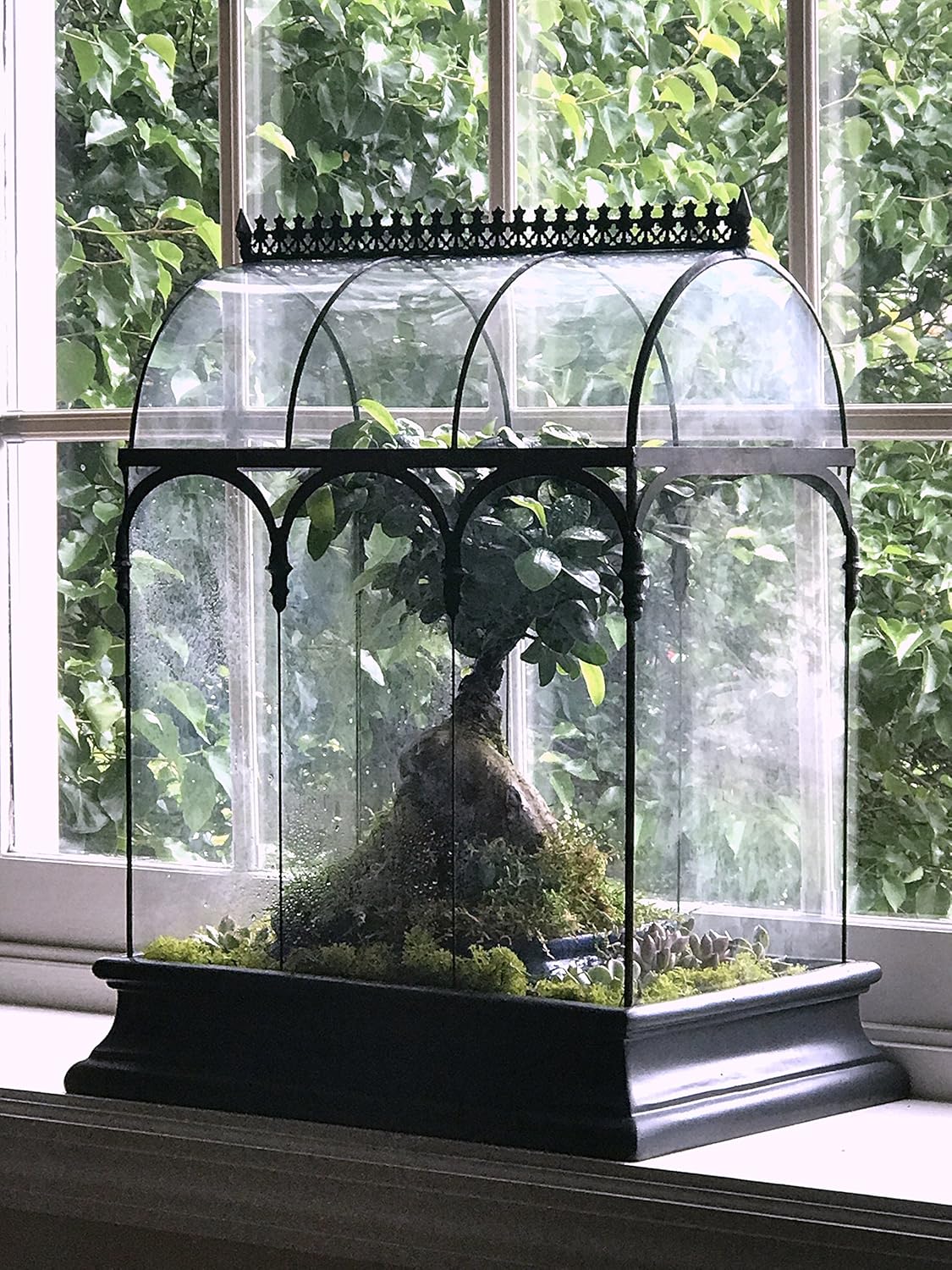
- Handcrafted curved glass terrarium, easy stackable design.
- Timeless Victorian style, perfect for modern home decor.
- Durable 3mm glass, lead-free solder, eco-friendly construction.
- Versatile seasonal accent, ideal for gifts or weddings.
- Promotes tranquility, healthy home environment, and elegant beauty.
How to Water Orchids Based on Growing Medium
1. Watering Orchids in Wood Bark
Wood bark is one of the most popular growing mediums for orchids, especially for beginners. It’s forgiving, provides excellent drainage, and is widely used for its simplicity and effectiveness.
- Watering Method: Run your orchid under the sink or use a watering can for 10-15 seconds, ensuring the bark and roots are thoroughly soaked. Alternatively, you can soak the pot in a container of water for 10-15 minutes, allowing the bark to absorb moisture.
- When to Water: Let the medium dry out completely between waterings. You can check by feeling the bark with your finger or observing the roots through a clear pot. For Phalaenopsis and Vandas, dry roots appear silvery-gray, while hydrated roots turn green. For other orchid species, rely on the dryness of the medium and the weight of the pot to determine when to water.
Pro Tip: For the healthiest orchids, always use pure, clean water. Rainwater, distilled water, or the gold standard—reverse osmosis water—are ideal choices to keep your plants thriving.
Speaking of reverse osmosis water, if you’re looking for an easy way to ensure your orchids get the best hydration, check out this top-rated reverse osmosis system. It’s a game-changer for orchid care! And don’t forget to explore our guide to fertilizing your orchids for even more tips on keeping your plants healthy and vibrant.
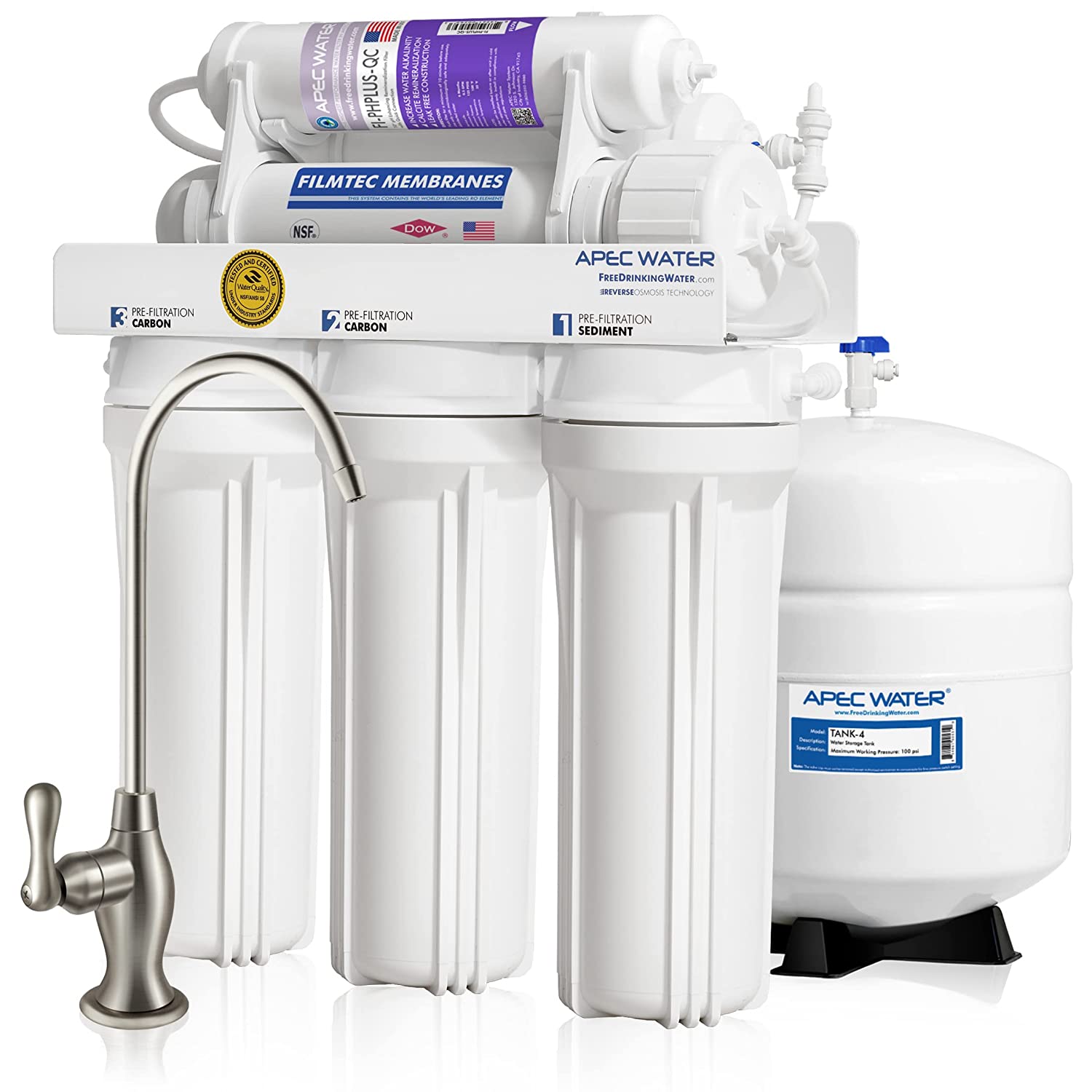
APEC Water Systems Top Tier Supreme Certified Alkaline Mineral pH+ High Flow 90 GPD 6-Stage Ultra Safe Reverse Osmosis Drinking Water Filter System (Ultimate RO-PH90)
2. Watering Orchids in Sphagnum Moss
Sphagnum moss retains moisture more evenly than bark, making it ideal for smaller plants or young orchids with underdeveloped root systems.
- Watering Method: Use a small amount of water—just a few tablespoons to half a cup, depending on the pot size. You can also place the pot in water for a few seconds, allowing the moss to wick moisture upward.
- When to Water: Wait until the moss feels dry and crunchy to the touch. Overwatering in moss can lead to root rot, so err on the side of caution.
Product Recommendation: A moisture meter can help you determine when it’s time to water, taking the guesswork out of orchid care.
3. Watering Orchids in LECA (Lightweight Expanded Clay Aggregate)
LECA is a modern, semi-hydroponic growing medium that’s gaining popularity among orchid growers. It’s perfect for self-watering systems and offers a unique approach to orchid care.
- Watering Method: LECA wicks water from a reservoir, keeping the roots consistently moist but not waterlogged. You can use a cone system or a wick system to automate watering.
- When to Water: Refill the reservoir when it’s empty, ensuring the LECA pellets remain slightly damp.
- Product Recommendation: Consider a self-watering orchid pot designed for LECA to simplify your watering routine.
For those interested in exploring a similar method, check out our in-depth guide on water culture for orchids. It’s packed with tips and step-by-step instructions to help you master this innovative growing technique
Orchid Care Tip: Did you know kelp seaweed can work wonders for your orchids? It’s rich in cytokinins, natural plant hormones that play a key role in orchid health. These powerful compounds stimulate cell division, enhance growth, and encourage orchids to focus on flower production. By incorporating a kelp-based fertilizer into your routine, you can give your orchids the extra push they need to produce bigger, more vibrant blooms.
If you have an orchid that’s been struggling to bloom, try adding kelp fertilizer to your watering routine in the months before its flowering cycle. It’s like giving your plants a backstage pass to their own floral show!

- Boosts Blooming with Natural Cytokinins
- Enhances Root Health and Growth
- Packed with Essential Nutrients
- Eco-Friendly and Sustainable
Common Mistakes to Avoid When Watering Orchids
- Overwatering: This is the number one cause of orchid death. Always let the growing medium dry out between waterings.
- Watering the Crown: Avoid letting water pool in the crown (where the leaves meet the stem), as this can lead to rot. Use a paper towel to blot away excess moisture if needed.
- Using Tap Water: Orchids are sensitive to chemicals in tap water. Use reverse osmosis water or rainwater for best results.
Enhancing Your Orchid Care Routine
Caring for orchids isn’t just about watering—it’s about creating an environment where they can thrive. Here are a few additional tips and product ideas to elevate your orchid care:
- Lighting: Orchids need bright, indirect light. If natural light is limited, consider using grow lights designed for indoor plants.
- Fertilizing: Use a balanced orchid fertilizer to promote healthy growth and vibrant blooms.
- Relaxation for You: While tending to your orchids, why not create a calming atmosphere with an aromatherapy diffuser or even a full body massage chair? After all, gardening should be as relaxing for you as it is beneficial for your plants.
Putting it all Together
Learning how to water orchids is a journey that requires patience and observation. By mastering this skill, you’ll unlock the secret to thriving, blooming orchids. By understanding your orchid’s specific needs and providing the right growing conditions, you’ll be rewarded with stunning blooms and healthy plants. Whether you’re using wood bark, sphagnum moss, or LECA, the key is to strike a balance between hydration and dryness.
For more orchid care tips and product recommendations, explore our affiliate partners’ offerings, from gardening tools to indoor gardening essentials. May your orchid care journey be as rewarding as it is beautiful!
We hope you found this information useful and if you like Heavenly Orchids, please join our mailing list for monthly updates.
